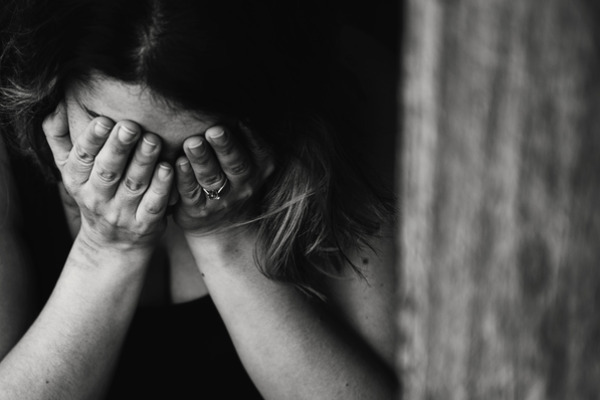Violence in all its forms has serious consequences. Discover what they are and what types of domestic violence exist.
The violence in the family It is not a recent phenomenon, but throughout history, violence within the family has been tolerated and accepted. It is not until recent decades that more visibility has been given to both its causes and consequences and, in fact, some experts identify the family as the main environment where violent acts occur. However, although it is now known that family violence has serious effects on those who suffer and/or witness it, it continues to be a phenomenon that entails difficulties in its identification given that, sometimes, the family members themselves They refuse to express what happened out of shame or fear of the consequences.
If you have come this far, you may be wondering what makes a person attack someone in their family and what consequences it can have for the victims. Through this article you will be able to learn about the different types of family violence, its causes and its consequences.
What is domestic violence and what types of violence are there?
Family violence (also called domestic violence ) is a type of violence that, as we have already mentioned, occurs within the family environment. Therefore, it is one that is exercised by one or more family members towards another who is also part of the family. Sometimes, when we talk about violence, perhaps the first thing that comes to mind is physical violence. However, acts that may affect the victim’s development are also considered violence, such as psychological violence, sexual abuse, abandonment, emotional abuse , etc. On the other hand, we usually associate violence with the socioeconomic level, but the reality is that it is a problem that does not have to be associated with the level of family income.
Types of violence:
Currently, various types of family abuse If we take into account who is the abuser and who is the victim, we can differentiate the following types of domestic violence :
- Violence towards minor sons or daughters: In the case of violence against minor children, it includes any act that endangers the development of the boy or girl. It is known that violence against minors has serious consequences since it is practiced from a relationship of vulnerability since the minor has fewer tools to defend himself from the attacks of the adult. Furthermore, taking into account that the family environment and especially parents, have an essential role in both emotional and cognitive development, abuse in childhood and adolescence causes violent relationship dynamics to be internalized. Therefore, the consequences are not limited to a short period of time, but this type of experience will influence the long term.
- Gender violence: Gender violence is defined as a set of behaviors that attack a person for belonging to a gender and in this case, it occurs within the family environment. Violence of this type can manifest itself in different ways, such as sexual, economic, physical, vicarious, etc.
- Child-parent violence: The term child-parent violence is used to refer to the violence that a son or daughter exercises towards their own parents. The son/daughter carries it out with the aim of causing harm to the victims and gaining power, control and dominance over their parents. In this case, it is known that sons or daughters mostly use three types of violence: psychological, economic (theft, generating debt, use of bank cards, etc.) and, finally, physical.
- Violence towards older family members: Elder abuse is understood when actions are repeatedly carried out that cause harm or distress to an elderly person and that occurs within a relationship where there is an expectation of trust from the elderly person towards another person, who in this case, is a familiar. This type of violence is not very visible because normally, the elderly person does not report this violence out of fear and/or guilt.

Causes of violence:
There is no single cause that can explain the domestic violence However, there are multiple theories that have attempted to explain violence and it has been shown that there are different factors that can influence the acquisition and maintenance of violent behaviors by people. These factors are:
- Having suffered previous experiences of abuse: It is known that one of the ways by which human beings learn is through imitation. Therefore, having experienced situations of violence or having witnessed them, especially during childhood, can lead the person to normalize violence and acquire it as their way of relating to others.
- Having difficulties in managing emotions and conflicts: Emotional regulation is an essential aspect both for the relationship with oneself and with others. When this emotional management has not been learned, other less healthy and adaptive ways are used to regulate those emotions that we do not like. In this case, the person who abuses manages the discomfort through violence towards others.
- Individual characteristics of the abusive person: Violence has also been explained through theories that emphasize the influence of personality. The characteristics that have been most associated with violence are impulsivity, the inability to regulate one’s own emotions, narcissism, and paranoid traits.
- Exposure to a high level of family stress: Families, whatever their characteristics, will always be exposed to changes, transitions and demands such as, for example, the adolescence of their children, the death of a member, etc. Sometimes, this change involves a high level of stress and, together with characteristics of the family structure and dynamics, causes violence to emerge as a way of managing the changes.
Consequences of family abuse:

The domestic violence It has both a physical and psychological impact and the effects vary depending on age and many other factors. The consequences of this traumatic experience usually last over time, so the help of a specialized professional is usually advisable. Violence is a risk factor for the development of multiple psychological disorders and, in fact, there are types of family violence that have been associated as risk factors for specific disorders. The consequences are diverse, the most common are:
- Difficulties in sleeping and eating.
- Delays in growth, language, development and difficulties in school performance (in boys and girls).
- Psychosomatic problems such as allergies, asthma, etc.
- Emotional problems: anxiety, depression, post-traumatic stress, low self-esteem, etc.
- Problems in social relationships
- Behavioral problems: delinquency, aggression, challenging behaviors, lack of empathy, etc.
- sexual dysfunctions
If you are going through a situation of violence, remember that in Spain the telephone number 016 for cases of gender violence and the number 116111 for situations of child abuse, both are free and available 24 hours a day. You can also call any other emergency number if you find yourself in any type of violent situation and/or suspect that someone is a victim of abuse.









